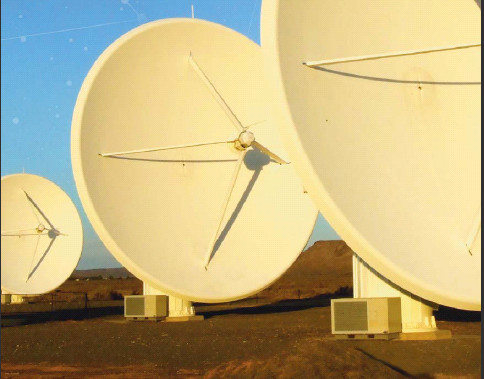
The Rhodes University Centre for Radio Astronomy Techniques and Technologies
That South Africa is on the world Radio Astronomy horizon in such a way as to have successfully won two-thirds of the SKA bid, is to a significant extent due to the impact of academics and graduates of the Radio Astronomy research programme at Rhodes University.
Rhodes’ renowned Radio Astronomy Unit, established over a half century ago, has made a significant contribution to the development of the KAT-7, the MeerKAT array, and to radio astronomy in South Africa and worldwide.
Building on this legacy, in 2011 Rhodes established the Centre for Radio Astronomy Techniques and Technologies (RATT), a research entity within the Department of Physics and Electronics, the Director of which is Professor Justin Jonas.
Prof Jonas is one of South Africa’s foremost radio astronomers and the Chief Scientist on the SKA project. Several Rhodes alumni, including Rhodes graduate Dr Adrian Tiplady (the SKA Site Bid Manager), support him.
The longest legacy in Radio Astronomy Rhodes has the longest legacy in Radio Astronomy of all South African universities, dating back to the 1950s when the groundbreaking work of Professor Jack Gledhill in the area of solar system astronomy first attracted international attention. Subsequently, well known names such as Professor Eddie Baart,
Professor Graeme Poole, Professor Gerhard de Jager and Dr Gerhard Verschuur, extended this work to studies of Jupiter. From 1976 the Hartebeeshoek Observatory (now HartRAO) was developed as a world class Radio Astronomy facility, largely as the result of the involvement of students, graduates and staff from
Rhodes, in the development of instrumentation and techniques. Twenty years later South Africa made a decision, in 1996, to invest in a small number of core areas of fundamental science. As Prof Jonas explains: “We are a smallish country and it made sense for us to only really invest in areas of fundamental science where we had a natural advantage.
Astronomy was chosen as one of these because South Africa is a good place to do astronomy.” Southern Africa - a science destination There was always a drive to build up astronomy in southern Africa and the SALT telescope - the Southern African Large Telescope, an optical telescope – is now operating in South Africa.
SALT is the largest optical telescope in the southern hemisphere. Namibia has the HESS telescope, which is the largest gammaray telescope in the world, and so the next ground based astronomy waveband that there is, and the only other one, is radio, so it was the logical thing to go after.
Securing SKA is “huge and really fantastic” said Prof Jonas. “I think this will really change the perception of Africa in all sorts of ways, and I think from outside and within, that it will be seen as a science destination, as opposed to a continent of resources or a place where you go for tourism or perhaps a place which just gets hand-outs.
